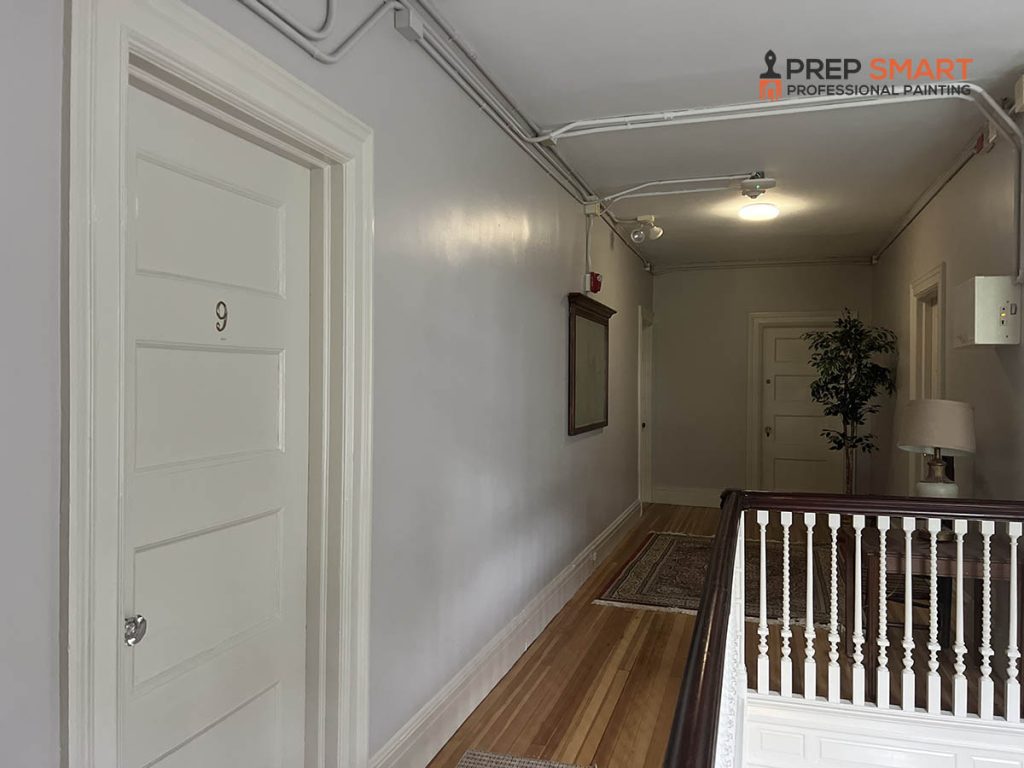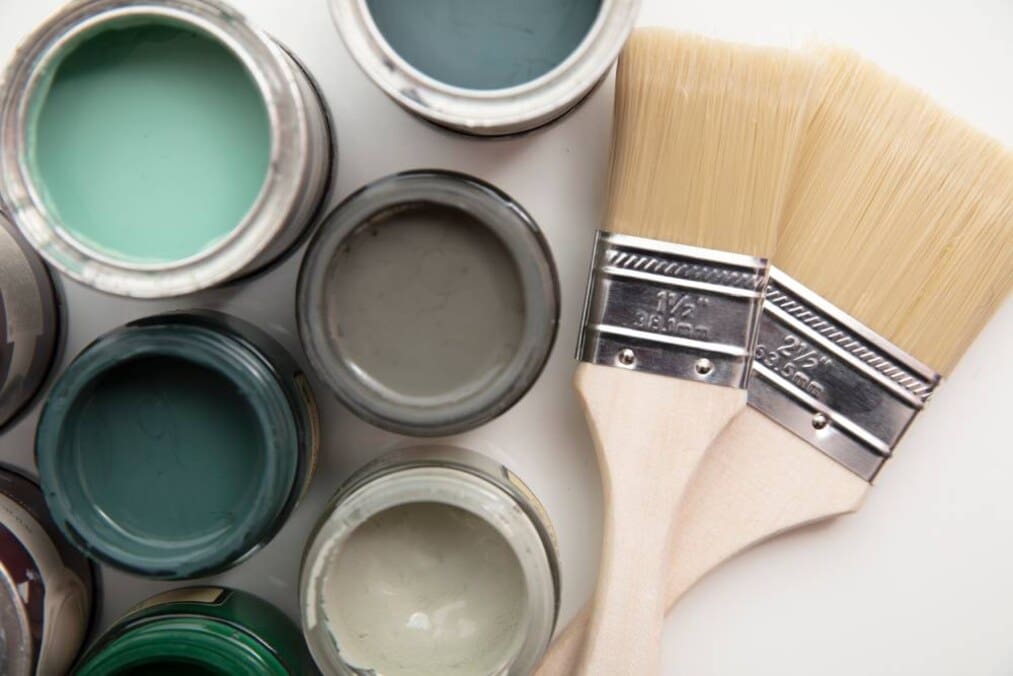
Popular Interior Paint Colors for 2024
Introduction
Choosing the right popular interior paint colors can transform your living spaces. In this brief guide, we’ll highlight the importance of selecting the perfect shades. We’ll also delve into the basic principles of color theory and offer expert advice on incorporating interior painting trends for 2024. Stay in vogue with your home decor effortlessly.
Importance of choosing the right paint color for interiors

Selecting the ideal paint color for your interiors extends beyond a mere visual decision. Here’s how this choice enhances the aesthetic appeal of your home:
Creating Atmosphere and Mood
Your house color scheme’s interior color palette shapes your home’s ambiance. Warm tones like earthy reds bring coziness, while cooler blues and greens establish tranquility. Embrace warm colors for a comforting and inviting atmosphere.
Reflecting Personal Style
Your home mirrors your personality, and the right paint color expresses your unique style. Whether you lean towards modern or traditional, your favorite colors significantly shape your living space’s visual narrative.
Influencing Perceptions of Space
Paint color influences how rooms are perceived; lighter shades enhance openness, while darker hues create intimacy. Strategic color choices, including using an accent wall, align with preferences and optimize functionality.
Harmonizing with Decor
The right paint color unifies furniture, decor, and design, creating a harmonious environment. Opting for neutral paint colors ensures seamless integration, tying disparate elements into a cohesive whole.
Adapting to Purpose
Paint color enhances functionality, with vibrant tones energizing creative spaces and calming white paints contributing to the effectiveness of bedrooms and relaxation areas.
Basic principles of color theory

Color Wheel Understanding: Familiarize yourself with the color wheel, a fundamental tool that organizes colors in a circular format. This tool, along with paint samples, assists in identifying color relationships and combinations, aiding you in making informed choices for your home.
Complementary and Analogous Colors: Discover the principles of complementary colors (opposites on the color wheel) and analogous colors (those found adjacent to each other). Complementary colors, often rooted in primary colors, create contrast, while analogous colors provide a harmonious blend in your color palette.
Psychology of Color: Delve into the psychology of color, understanding how different hues evoke emotions and moods. For instance, warm tones may elicit feelings of coziness, while cool tones can evoke tranquility, shaping the emotional impact of your chosen color scheme.
Creating a Cohesive Palette: Combine these principles to craft a visually appealing and cohesive color palette for your interiors, aligning with current design trends. The objective is to achieve a harmonious blend of colors that enhances the overall aesthetic of your living spaces, ensuring your home is stylish and on-point.
How to Choose the Right Paint Color for Your Home
Navigating the vast spectrum of paint colors can be overwhelming, but fear not. By considering these factors, you can confidently select the perfect palette:
Room Size and Purpose
Take into account the size and purpose of each room. Warm whites tend to make smaller spaces feel more expansive, while darker hues can add warmth and intimacy to larger rooms. Consider the room’s function – vibrant for creative spaces, calming for bedrooms, etc.
Natural Light
Evaluate the amount of natural light each room receives. Natural light can significantly influence how colors appear. In well-lit rooms, colors may appear brighter, while in darker spaces, they may seem more subdued. Adjust your color choices accordingly.
Personal Preferences
Factor in your personal preferences and style. Your home is an extension of your personality, so choose colors that resonate with you. Your paint choices should align with your taste, whether you lean towards bold statements or prefer a more muted palette.
Samples and Test Patches
Before committing to a color, obtain samples or test patches. Apply these to different wall sections to observe how they interact with the room’s lighting throughout the day. This hands-on approach helps you visualize the final result and ensures it aligns seamlessly with your vision.
How Color Theory Applies to Interior Design

Color theory goes beyond merely choosing paint; it influences every aspect of interior design, from furniture selection to decor and overall design schemes. You create a unified and aesthetically pleasing environment by harmonizing colors throughout your home.
Consistency in color choices ties together disparate elements, fostering a cohesive and visually appealing atmosphere that resonates throughout the entire living space. This intentional approach to color enhances the overall design, elevating the ambiance and creating a sense of balance and unity.
Top Interior Paint Colors for 2024
Wondering what is the most popular color for interior walls? Look no further than these adaptable and timeless shades. Each color offers a distinct personality, allowing you to tailor your home’s ambiance to your preferences and design vision.
Dark Auburn by Sherwin-Williams
A rich, deep hue that adds warmth and sophistication to any space, dark colors are perfect for creating a cozy and intimate atmosphere.
Sweet Embrace by Dulux
This soft neutral with pink undertones offers comfort and serenity. Ideal for bedrooms or relaxation areas, it adds warmth and subtle vibrance to any understated design scheme.
Blue Nova by Benjamin Moore
This recently unveiled, vibrant, and contemporary blue, known as Blue Nova 825, brings a refreshing energy to rooms. Ideal for creating a modern and lively ambiance.
Classic Blue
Classic Blue is a timeless and versatile shade that exudes elegance and calmness, making it a suitable choice for various design styles and spaces. Stay ahead with this enduring hue in your paint color trends.
Dark Blue and Dark Green
These deep, moody colors add a touch of drama and sophistication to your space, creating a sense of coziness and luxury within the chosen color family.
Earthy Tones
Natural and warm earthy tones, like terracotta, olive, and warm browns, bring a grounded and organic feel to your interiors. Embrace these hues as an accent shade for a touch of nature-inspired warmth.
White, Cream, Beige
Timeless neutrals provide a clean and versatile backdrop, making them a popular shade for easy integration with various decor styles and accent colors.
Pastel Shades
Soft and soothing pastel tones like pale blues, pinks, and greens add a touch of sweetness and freshness to your living spaces, making them a popular color choice for a light and airy atmosphere.
Additional Popular Interior Colors
- Sage Green: A calming and sophisticated green shade.
- Lilac: A soft and romantic purple hue.
- Apricot: A warm and inviting orange tone.
- Denim Blue: A casual, versatile blue that pairs well with various styles.
- Barbie Pink: A vibrant and playful pink for a bold statement.
- Chocolate Brown: A rich and luxurious brown for added warmth.
- Lime Green: A lively and energetic green that adds a pop of color to your interiors.
Incorporating Color Trends into Your Home
Expert advice and recommendations
Ready to enhance your home with a fresh coat of paint? Seek guidance from color experts and interior designers for insights into interior painting tips, timeless choices, and unique color combinations that align with your style. Elevate your space confidently—Prep Smart with when selecting colors and bring your vision to life.
Final Thoughts
Choosing the right interior paint color is a creative and rewarding process that can significantly impact the atmosphere of your home. Professional Painters in Rhode Island suggest trusting your instincts, seeking inspiration, and enjoying the transformation of your living spaces. Professional Painters in Connecticut emphasize that selecting the perfect color can make all the difference. Professional Painters in Massachusetts recommend exploring popular interior paint colors for 2024 to find the best match for your home.
Embrace the journey and enjoy the transformation that the right interior paint color can bring to your home.
FAQs
Q1: What wall color goes with everything?
A1: Neutral tones such as beige, gray, and white are versatile and can complement a wide range of decor styles.
Q2: What colors make a house look expensive?
A2: For a touch of luxury and sophistication, consider rich, deep colors like navy blue, emerald green, and burgundy as part of your interior paint colors—Sherwin Williams has a stunning selection to elevate your home’s aesthetic.
Q3: What are the two best colors that go together?
A3: Classic pairings include blue and white, gray and yellow, or navy and gold. Experimenting with these combinations can add visual interest to your interiors.
Enhance your living spaces with the power of popular interior paint colors, creating a home that reflects your style and personality.






